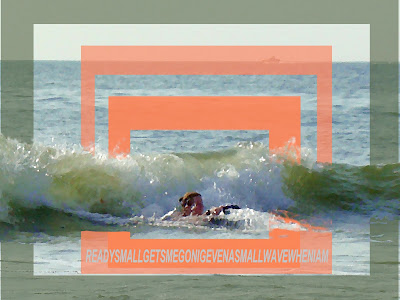Yesterday I picked up the paintings I presented to the McGuffey Center. I became very pessimistic about my chances. I took my eyes off truth and started to believe the lies my mind was telling me about who I was. The blog is helping me to center again
 |
| A dimensional realist portrait done for my BFA |
Earlier I promised that I would continue my discussion on the direction my art focus is taking me. As I had said, an attempt at reproducing what I saw and experienced on the natural world was like taking something alive and vibrant and killing it. It was enough to cause me to loose much of my enthusiasm for painting. In looking for new direction, I seriously considered undertaking a Masters of Fine Art at VCU's highly regarded art school. In order to get in, I had to put together a body of work with convincing intellectual content. It didn't take much to find what has been inside me all the time. In the nineties for the senior year thesis, I produced a body of work that looked at layered realism. There was the immediate visual layer, then the deeper level of the real person; personality, spirit, experience, idiosyncrasies etc. In order to express that, I used deformed text to form the image. The image was actually formed by the text. I was expressing the fact that there is more to a person than what we instantly see, But you can only get to that if you make a connection with them. In the paintings, you could only discover the deeper things I was saying if spent a lot of time deciphering the text. The text though was also somewhat deconstructed, so that when you were finally able to read it, the meaning was not what I experienced, but became a catalyst to what the viewer was feeling while connecting to the painting.
While preparing the folio for VCU, I tapped into my the thoughts that I was having about connectedness and disconnectedness. I still want my paintings to have visual impact. I want them to be beautiful, breathtaking in the skill level demonstrated, and yes even decorative. But I also want them to be a catalyst. I want them to simulate the viewer to start thinking about the importance of our connection to all things. In the end I didn’t persue am MBF, but the process has me on track again. I have renewed the connection between where my spirit is, and what I am expressing in my paintings.


























